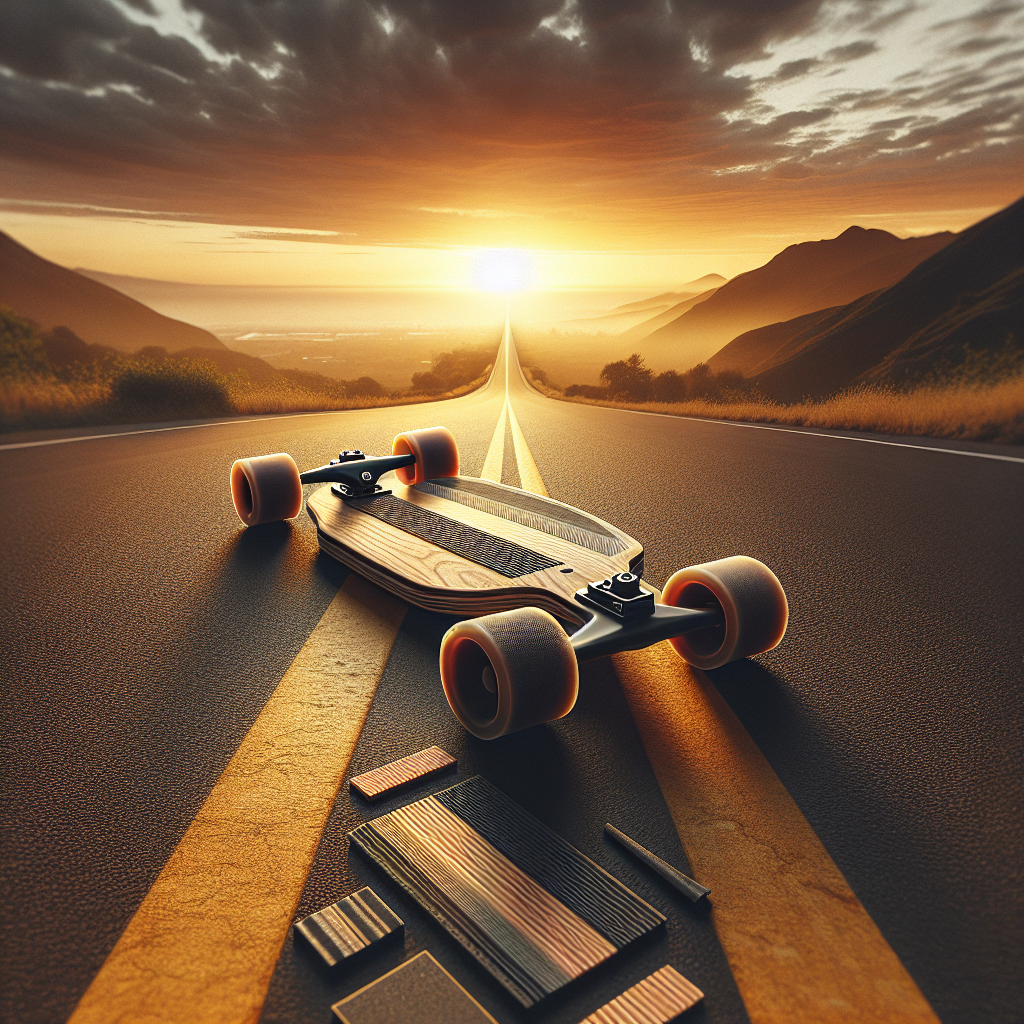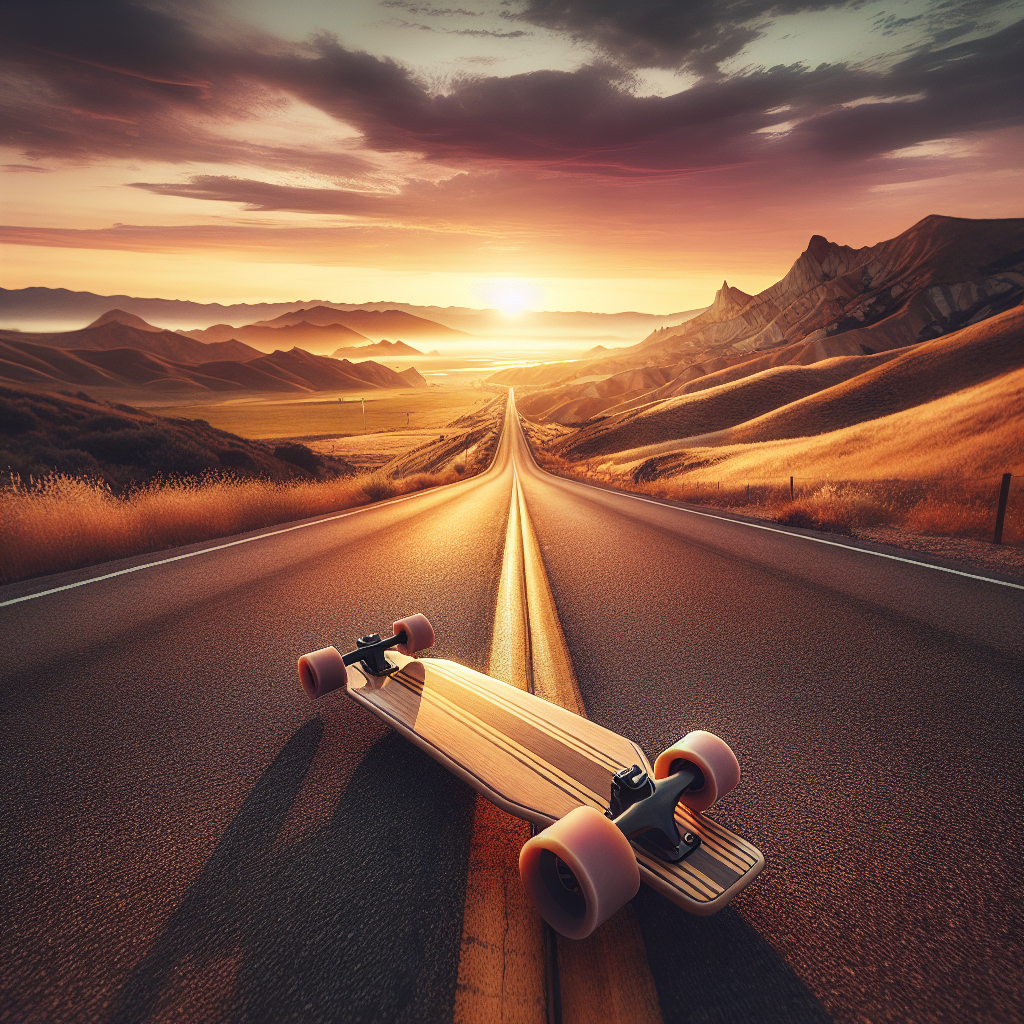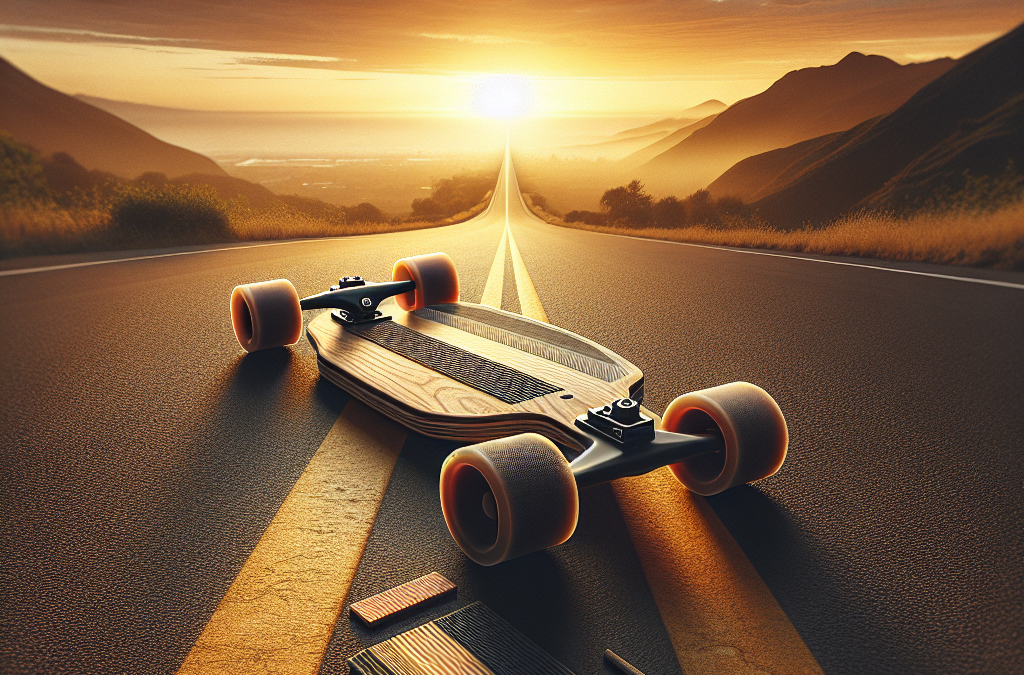Your passion for adventure and the call of the open road have finally led you to the thrilling world of longboarding. This beginner’s guide will gently lead you through your first steps on the longboard, from choosing the right board to mastering basic techniques, all the way to confidently navigating different terrains. Bask in the glory of the open road beneath your wheels and the wind in your face, as this guide gives you a perfect introduction to your newly chosen adventure – longboarding. So whether it’s cruising streets or carving down hills, let’s embark on an exciting journey on four wheels, under your own steam!

Understanding What Longboarding Is
Longboarding is a popular outdoor activity that is both fun and challenging. It’s also a fantastic way to keep fit and active. But what exactly is longboarding?
Explanation of longboarding
At its most basic, longboarding involves riding on a longboard, which is a type of skateboard. Unlike regular skateboards, longboards are usually larger and longer. Longboards can be used just about anywhere, from city streets to hilly terrains, and they’re great for cruising, commuting, freeriding, and downhill racing.
History of longboarding
The history of longboarding dates back to the 1950s and 1960s, when surfers in Hawaii began taking their passion to the pavement when the waves weren’t favorable. They began to modify their skateboards to make them longer and more stable, a practice which eventually led to the development of the longboard we know today.
Differences between skateboarding and longboarding
While both skateboarding and longboarding involve riding on a board with wheels, there are some key differences. The most apparent difference is the size: longboards, as the name suggests, are significantly longer than the typical skateboard. Moreover, longboards are typically used for downhill racing, cruising, and transportation, while traditional skateboards are more commonly used for performing tricks.
Choosing The Right Longboard
Now that you have some general knowledge about longboarding, it’s time to choose your very own longboard.
The different types of longboards
Longboards come in a variety of shapes and sizes, each designed for a specific type of ride. The main types include cruisers (great for beginners and for commuting), carving boards (ideal for making tight turns), downhill boards (used for fast and straight rides), and freeride boards (great for slides and technical maneuvers).
Selecting the right size of a longboard for your needs and height
When it comes to size, your height and what you plan to do with your longboard are major factors to consider. For cruising and carving, a board that is waist to chest high when standing upright is usually a good fit. For more intense activities like downhill racing, you’ll want a longer board for added stability.
Choosing the right wheels and trucks for your longboard
Wheels and trucks are crucial components of your longboard. Large, soft wheels offer a smoother ride while smaller, harder wheels are great for sliding. The trucks also come in various sizes and should be chosen based on the width of your board and your personal preference for ride tightness.
Essential Longboarding Gear
Longboarding demands respect—not just for the ride but also for safety.
Importance of safety gear
Just like in any extreme sport, safety gear is paramount in longboarding. Accidents can happen, and being prepared can mean the difference between a minor scrape and a serious injury.
Helmet selection and fitting
A skateboard helmet is a critical piece of equipment. It should fit snugly on your head, be comfortably secure, and damn near indestructible. Helmets with EPS foam liners are recommended due to their high impact resistance.
Choosing appropriate knee and elbow pads
Alongside a helmet, knee and elbow pads are also essential. They should fit well and be comfortable enough for long wear. These pads provide crucial protection in case of falls, which are inevitable when you’re learning to longboard.
Discussing other gear like gloves and slide pucks
Gloves equipped with slide pucks are also necessary for riders exploring advanced techniques like sliding and downhill racing. They protect your hands during hand-down slides and help you navigate tight turns.
Understanding The Basics Of Balance And Stance
Longboarding is all about balance and stance. These two factors can make or break your riding experience.
Stance options and choices
There are two main stances in longboarding, regular (left foot forward) and goofy (right foot forward). Your stance is determined by which foot you naturally put forward. It’s important to spend time getting comfortable with your chosen stance so that it feels natural and balanced.
The importance of good body posture
Good body posture is vital in maintaining balance. For longboarders, this means keeping your knees slightly bent, your back straight, and your body weight centered over the board. This position allows optimum control and maneuverability.
Balance – The key to longboarding
Above all else, balance is the key to becoming successful at longboarding. It’s a skill that will take time to master, but the effort is worth it. Practice standing on your board and shifting your weight on different foot positions to get a feel for maintaining balance.

Mastering The Essential Longboarding Techniques
Longboarding isn’t just about standing on a board and rolling down a hill—it involves learning and mastering several techniques.
Carving: Learning the Basics
Carving is a basic technique used to control your speed. It involves making a series of ‘S’ shaped movements across the direction of travel. It’s also a fun way to add style to your ride.
Foot braking: How and when to do it
Foot braking is the simplest way to slow down while on your longboard and involves dragging one foot along the ground. It’s an essential technique for beginners to learn to maintain control.
Pumping: Building your speed
Pumping is a technique used to gain speed by shifting your body weight without having to step off the board. Pumping is an advanced technique and can be quite challenging for beginners, but once mastered, it adds significantly to the thrill of longboarding.
Sliding: The technique for advanced control
Sliding is an advanced move that involves shifting your body weight and rotating your board sideways to slow down or stop altogether. Sliding is also used to navigate tight turns at high speeds.
Maintaining Safe Practices While Longboarding
As with any extreme sport, it’s crucial to practice safe longboarding.
The importance of warm-up and cool-down exercises
Longboarding, though fun, is intense on your body. Therefore, it’s important to warm-up before you start and cool down once you finish. This helps to prepare the muscles and minimize the risk of injury.
Knowing your limitations
It’s essential to know your limits when longboarding. This means not trying tricks or speeds that you’re not comfortable with or ready for. Always be aware of your abilities and work your way up gradually.
Ensuring your longboarding area is safe
This means choosing a place free of obstacles and with safe terrain to longboard. This can range from quiet streets to designated skate parks or down quiet open road paths.
Avoiding high-risk maneuvers for beginners
Novices should focus on mastering the basics first before trying advanced moves. High-risk maneuvers can be dangerous without the proper experience and skill level.
Learning about Longboarding Etiquette
Longboarding isn’t just about riding a board; it’s a community that values respect among its members and towards others.
Respecting pedestrians and other road users
When longboarding, it’s crucial to respect others. This includes pedestrians, cyclists, and motorists. Always yield to pedestrians and try to avoid areas with heavy traffic.
Following local laws and regulations
Every city has its regulations when it comes to longboarding. Familiarizing yourself with these laws and following them is not just about avoiding penalties—it’s about ensuring everyone’s safety.
Being aware of the environment
As a longboarder, you have a responsibility to the environment. Don’t litter and stick to established paths to reduce your impact on the environment.
Understanding Open Road Conditions
Riding on open roads poses both exciting opportunities and important considerations.
Grasping the difference between longboarding on open roads versus closed circuits
While closed circuits like skate parks offer a controlled and obstacle-free environment, open roads offer a raw and thrilling experience with varying terrains. However, they come with additional challenges like traffic and changing road conditions.
How to handle and approach different road surfaces
Different road surfaces offer different riding experiences. Smooth asphalt is great for speed, while rougher surfaces offer an excellent grip. It’s important to learn how to ride on different surfaces and adjust your technique accordingly.
The importance of knowing your route
Before venturing out on the open road, familiarize yourself with the route. This includes knowing where the steep gradients, sharp turns, and potential hazards are.
Understanding weather impacts
Weather conditions can greatly affect your longboarding experience. Wet conditions can make surfaces slick and harder to control, while hot, dry conditions can wear your wheels down faster. Don’t let the weather catch you off guard.
Longboarding Maintenance Tips
Like any piece of equipment, a longboard requires regular maintenance to keep it in good working condition.
Keeping your longboard clean
Especially after a ride, make sure to clean your longboard. This includes wiping down the deck, cleaning the wheels, and ensuring the trucks are free of dirt and grime.
Regularly inspecting and replacing worn-out parts
Over time, parts of your longboard will wear out and need replacing. Regularly inspect your board for any signs of wear and replace parts as necessary to ensure optimum functionality and safety.
Storing your longboard properly to increase lifespan
Storing your longboard properly can greatly increase its lifespan. Avoid leaving it in direct sunlight or damp places, as these can damage the board and wheels.
How to Improve Your Longboarding Skills
Growing as a longboarder includes constant learning and practice.
Practicing regularly
Like any skill, regular practice is the key to improving your longboarding skills. Spend time riding your board, trying different techniques, and gradually pushing your boundaries.
Learning from more experienced longboarders
Don’t shy away from asking for tips and advice from more experienced longboarders. They can offer valuable insights and guidance that can help improve your skills.
Taking advantage of online resources and tutorials
The internet is full of longboarding tutorials and resources. These can come in handy when learning new techniques or seeking tips on improving your ride.
Joining local longboarding communities
Consider joining a local longboarding community. This can provide a supportive environment where you can share your experiences and learn from others, plus it can be a lot of fun!

